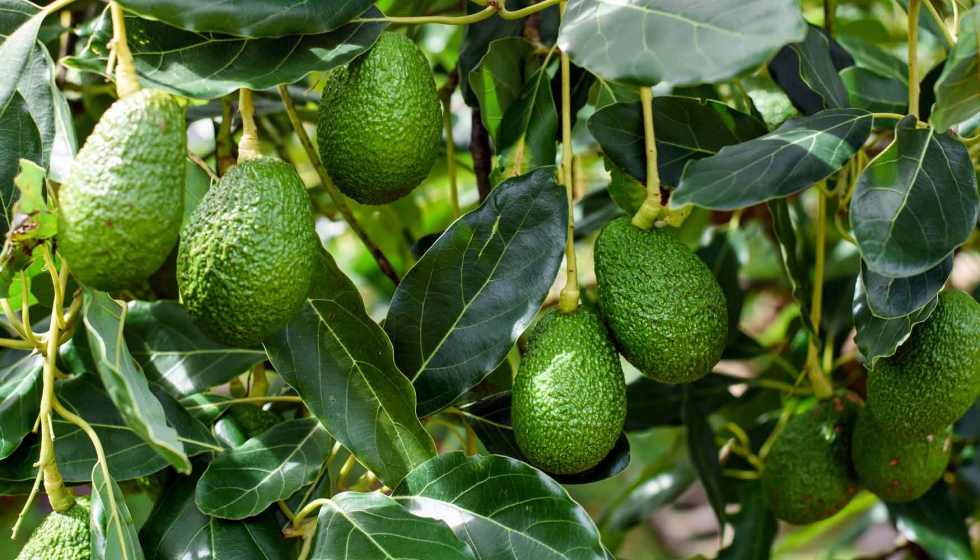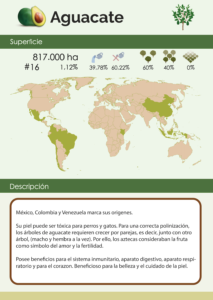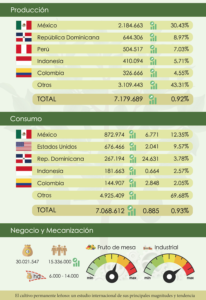The word avocado derives from the word «ahuacatl», from the Nahuatl language, and its translation is «testicles». The Nahuas identified them as such because of their particular shape when hanging from the tree.
It has a millenary origin, and the first data of its consumption are dated in a cave of Coaxcatlán. Mexico is the birthplace of the avocado, where it is easy to find more than one of these trees in every yard in Mexico, since avocado trees grow in pairs.
The avocado spread rapidly throughout the continent since prehistoric times thanks to the Mammoth, who was the main protagonist of its expansion throughout the American continent due to its long distance travel.
A peculiarity of all the varieties of avocado is that its fruit contains a large seed, and because of this size it was not easy to move for the fauna of the area. To be transported it required a large animal that could move it without damaging the seed in its digestive process. And at that time the mammals that were in charge of this important mission were the mammoths. After tasting the avocado trees in the area, they moved across the continent, sometimes farther than others, and in their travels they deposited their waste, where the bones of the avocado tree were found. Step by step, journey after journey, mammoths and other large mammals planted avocado trees throughout the Americas.
The world has 817,000 hectares of avocado trees, ranking sixteenth in terms of area of permanent woody crops. Mexico is the country with the highest production with 2,184,663 tons and the country with the highest consumption with 872,974 tons of its fruit, with an upward trend in both activities.
It generates 15,336,000 jobs per year.
It has benefits for the immune system, digestive system, respiratory system and heart. Also, it is beneficial for the skin not only for its intake, but also for its use in creams and facial masks.



